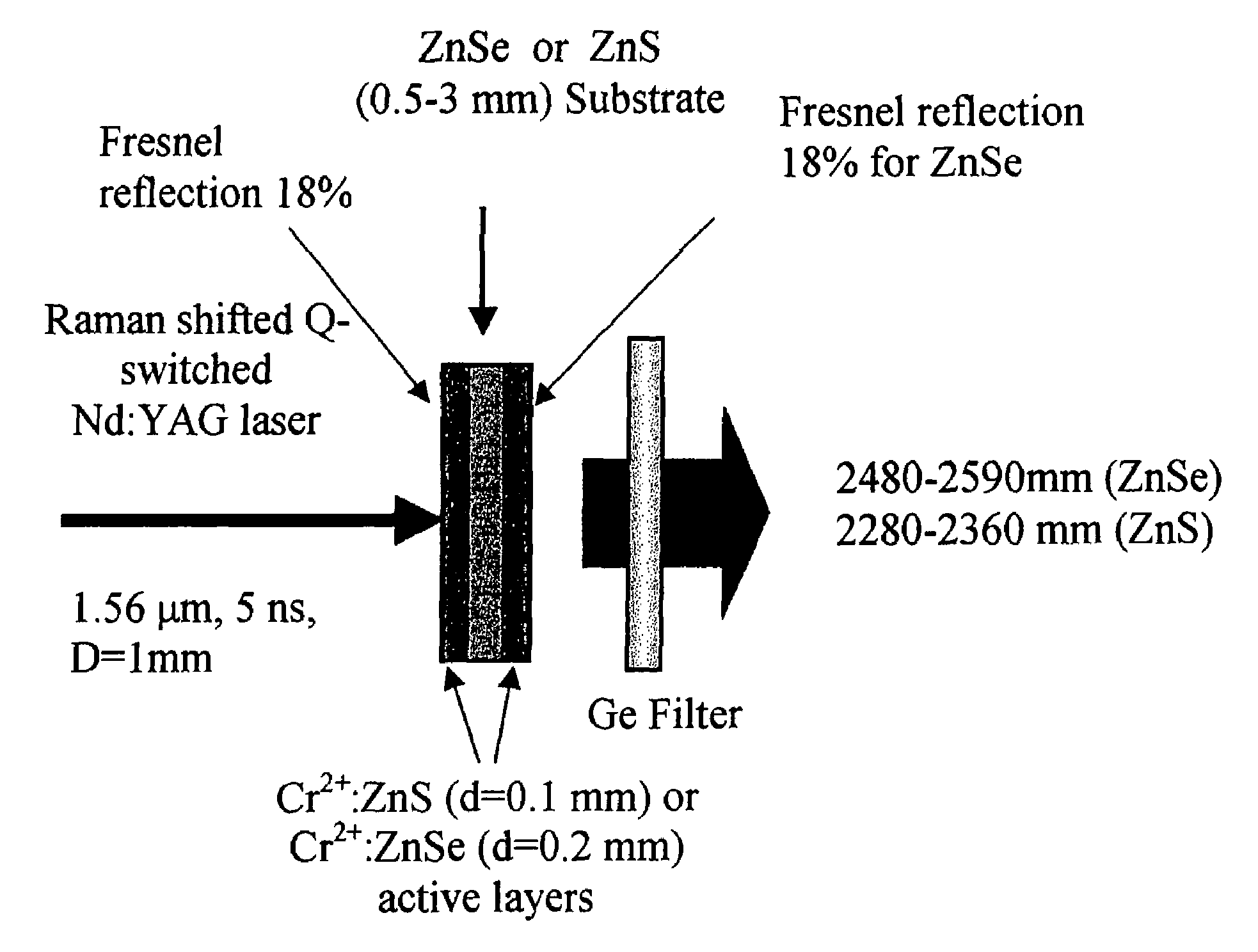Mid-IR microchip laser: ZnS:Cr2+ laser with saturable absorber material
a microchip laser and absorber material technology, applied in the field ofquantum electronics, can solve the problems of affecting the quantum efficiency of fluorescence at room temperature, and limiting the use of robust low-cost mid-range lasers, etc., to achieve low-cost mass production and good reproducibility and reliability.
- Summary
- Abstract
- Description
- Claims
- Application Information
AI Technical Summary
Benefits of technology
Problems solved by technology
Method used
Image
Examples
Embodiment Construction
[0045]In the preferred embodiment, the Cr2+:ZnS crystals are prepared by a three-stage method according to a flow chart depicted in FIG. 1. At the first stage, undoped single crystals are synthesized by a chemical transport reaction from gas phase using an iodine gas transport scheme, preferably in a quartz tube 20 mm in diameter and 200 mm in length placed in a two heating zone furnace. Powder obtained by a joint ignition of initial components serves as raw material. Temperatures in the zones of raw material and crystallization are approximately 1200° C. and 1100° C. respectively. I2 concentration is in the range of 2-5 mg / cm3. High optical quality unoriented ingots, preferably Ø2×cm3, are cut and ground to slabs of 5×5×3 mm size.
[0046]At the second stage and third stages, introduction of chromium (or other transitional metal) into the crystalline host is performed by thermal diffusion (third stage) from a then film deposited, preferably, by the pulse laser deposition method (secon...
PUM
| Property | Measurement | Unit |
|---|---|---|
| output power | aaaaa | aaaaa |
| threshold | aaaaa | aaaaa |
| threshold | aaaaa | aaaaa |
Abstract
Description
Claims
Application Information
 Login to View More
Login to View More - R&D
- Intellectual Property
- Life Sciences
- Materials
- Tech Scout
- Unparalleled Data Quality
- Higher Quality Content
- 60% Fewer Hallucinations
Browse by: Latest US Patents, China's latest patents, Technical Efficacy Thesaurus, Application Domain, Technology Topic, Popular Technical Reports.
© 2025 PatSnap. All rights reserved.Legal|Privacy policy|Modern Slavery Act Transparency Statement|Sitemap|About US| Contact US: help@patsnap.com



